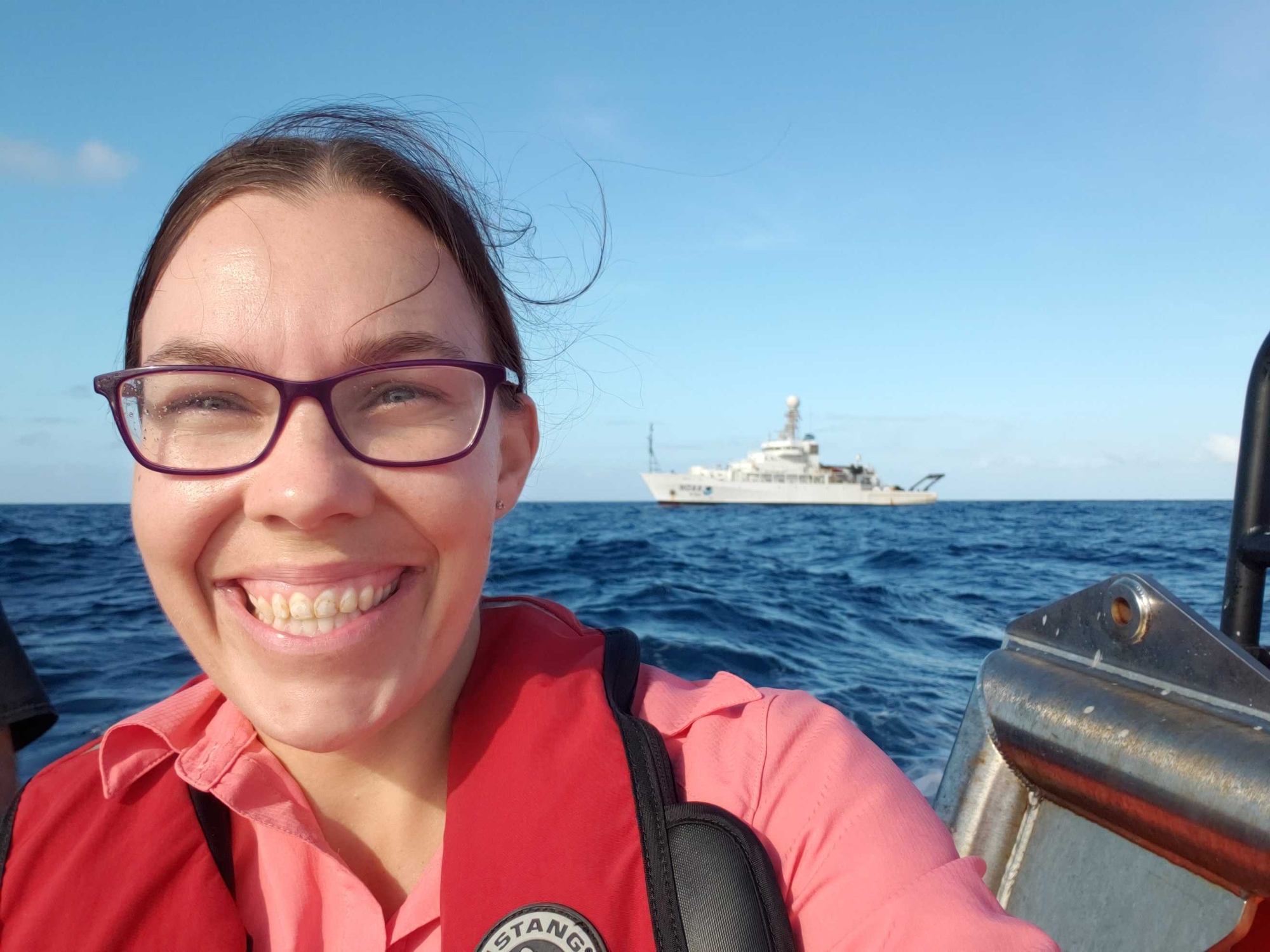If you’re looking for Michelle Spencer out in the field, you’ll normally find her near a Collaborative Lower Atmospheric Mobile Profiling System (CLAMPS) or possibly serving as part of the BLISS copter sonder team. But last semester, Spencer participated in something a little outside her area of expertise.
After working as a NOAA Lapenta intern, she was invited by her mentor to participate in the five-week-long PIRATA northeast cruise. The main goal of the cruise was to travel the tropical Atlantic and service buoy sites. “You bring in the buoys, switch out the instrumentation because the batteries don’t last forever, make sure everything looks good, and then redeploy so you have a continuous time series of ocean data and surface data as well,” she said.
Spencer was on the conductivity temperature and depth (CTD) team, which deployed instruments along the 23° w meridian to capture profiles of the ocean.
She joined the cruise with the intent to make the most of the opportunity and participate in as much science as possible, no matter how removed from her area of research. So when one crew member was unable to make the trip, she volunteered to take the lead on their project: the collection of sargassum. “That involved collecting seaweed at any point when we were able to stop the ship. We would collect the seaweed, dry it, and they’re running chemical testing to help determine the origins of this seaweed because it has become such a problem in the last 10 to 11 years in the tropics.” She was able to collect samples from a part of the Atlantic that the original scientist had never collected from before.
On top of the various instrument deployments, servicing stops, and life at sea, Spencer and the others aboard the cruise were asked by the US and Swedish coast guards to make a detour to rescue individuals on a sailboat with a broken mast.
On a normal day, on land and without rescue missions, Spencer is interested in observational meteorology and the boundary layer, topics that drew her to OU for her Ph.D.
Spencer’s education path was untraditional early on. She started college right out of high school, but after her freshman year, she took about five years off before returning to complete her undergraduate degree. The summer before she completed her bachelor’s degree, she came to the National Weather Center for the Research Experience for Undergraduates (REU) program, where she worked with Dr. Elizabeth Smith and A&GS Executive Associate Dean Dr. Petra Klein. “Coming to OU and getting that under my belt was really eye-opening on all the possibilities that can happen,” said Spencer. The REU was her first research opportunity.
She went on to receive her master’s degree from the University of Wisconsin Milwaukee. She graduated in December 2021 and came to OU to begin pursuing her Ph.D. in January 2022. She decided to return to OU so she could work more in observational meteorology, and she knew that there were a wealth of field work opportunities happening at the University.
Currently, she’s studying boundary-layer coastal interactions in Houston and using boundary-layer profiles to characterize different aspects of the boundary layer in a coastal and complex environment using data collected during the 2022 TRACER-CUBIC project. She’s once again working with Smith and Klein: “They're really good about making sure to have real-life conversations, not just focused 100 percent on research which I really appreciate. Ultimately at the end of the day, your whole life is not just your job and so having people that advocate for you in every aspect including your professional growth has been really awesome.”
Outside of work, Spencer enjoys camping and mountain climbing. She also loves photography and kayaking.
By Kathryn Gebauer
Article Published: Monday, January 30, 2023
